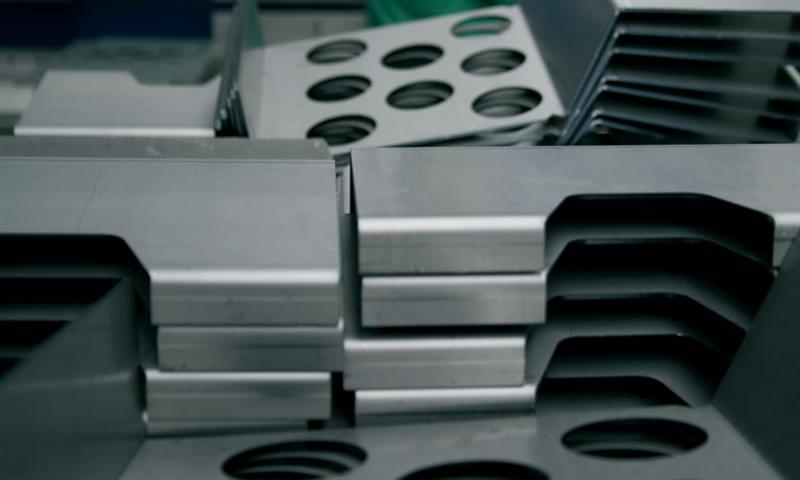Sheet metal CNC punching: guide for aspiring professional

If you’re interested in the sheet metal punching you should take in mind some characteristics that can help you to make the right choice. Let’s discover them!
Sheet metal punching is one of the most common processes in metalworking industry.
Carried out by CNC (computer numerically controlled) machines, punching works thanks to a combination of punches and dies that perfectly combine themselves for creating holes of any shapes and sizes on metals.
How does it work?
On one side there’s a punch, on the other side it’s allocated the die and, in the middle, stands the piece of metal you want to pierce.
Once the metal is fixed, the mechanical forces of the CNC machine come into play. During the sheet metal punching, the punch is programmed to exert a specific pressure on the piece you’re working on while, the die works as a support. When the force reaches the right level, the punch pass through the sheet metal by fixing itself with the mold that is located under it; this process allow us to create hole in the metal piece.
Thank to punching, you can create holes of any design: circle, rectangle, large, small, with flush edges and you can achieve excellent finished product with stainless steel, zintec, aluminum.
The formula
If you’re an aspirant metalworking professional, you should begin to familiarize with the equation used to estimate the right parameters for your punching machine.
F = punch force in Kilonewton (10 kN = 1 metric ton)
U = circumference or perimeter of the punch shape (in mm)
s = Sheet thickness (in mm)
Rm = tensile strength (in N/mm²)
for Stainless Steel (1.4301) 720 N/mm²
for Mild Steel (St 37) 420 N/mm²
for Aluminum (AlMg3) 220 N/mm²
f = factor between 0,5 - 0,95 when using punches with shear.
Suggestions for aspiring professional If you’re interested in a sheet metal punching process in order to give a specific shape to your pieces of metal, you should take in mind some characteristics that can help you to make the right choice.
1. Sheet metal punching is more expensive than other metalworking used to create holes
2. It’s perfect for small – medium production
3. When you punch circular holes, their diameters should be bigger than the sheet metal's measure; never punch a hole that is smaller in diameter than the thickness of your sheet metal
4. When you punch shaped holes, the shortest side should be bigger or equal to the thickness of sheet metal
5. To reduce the punching time you can use cluster tools – this is useful to save time and money when you must process multiple holes
6. Holes and the stamping parts can be more or less deformed and with more or less accentuated burrs on the edges; the characteristics of the punch essentially depend on the thickness and quality of the material, on the combination between punch and die and on the condition of the cutting edges.

